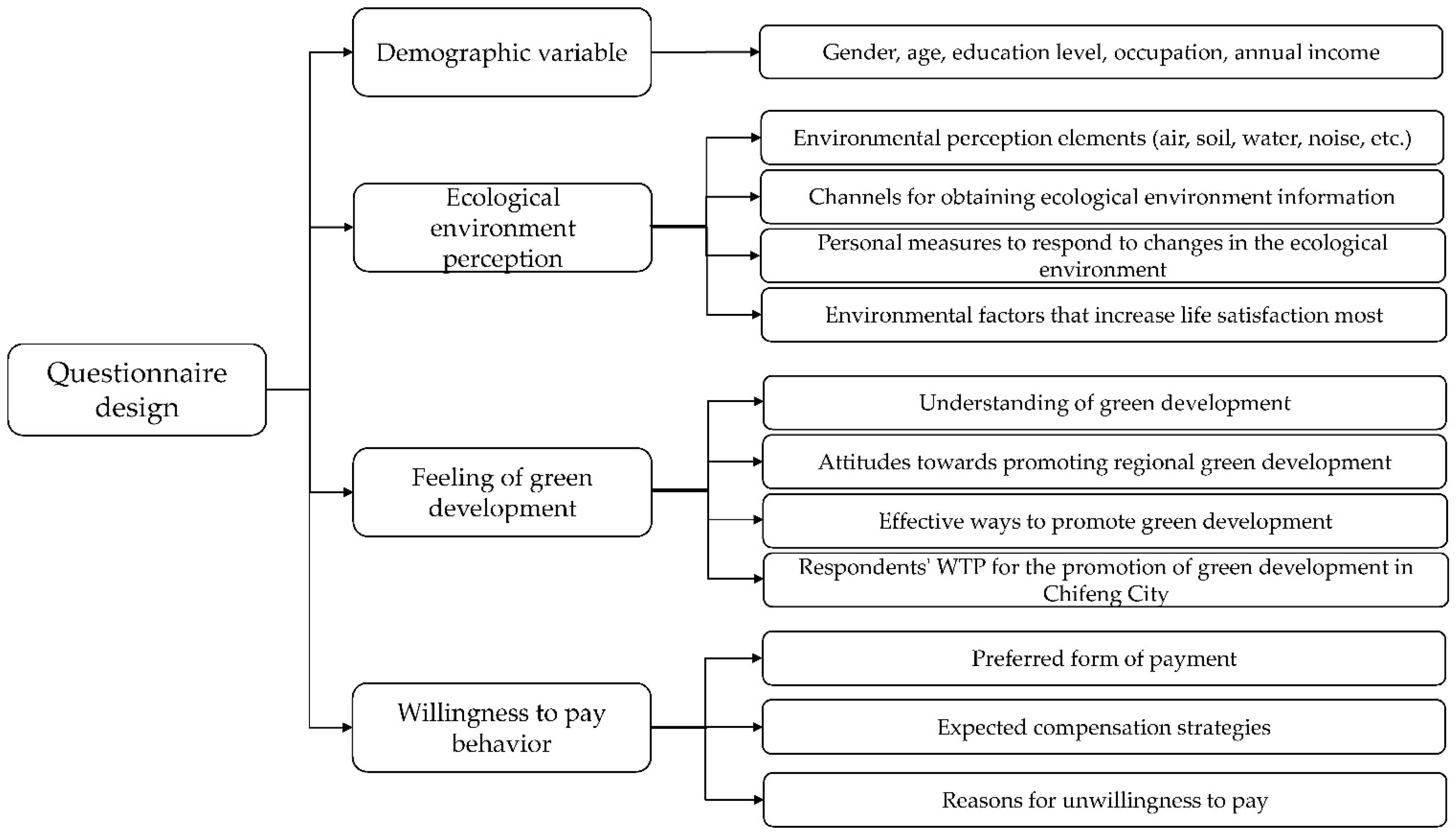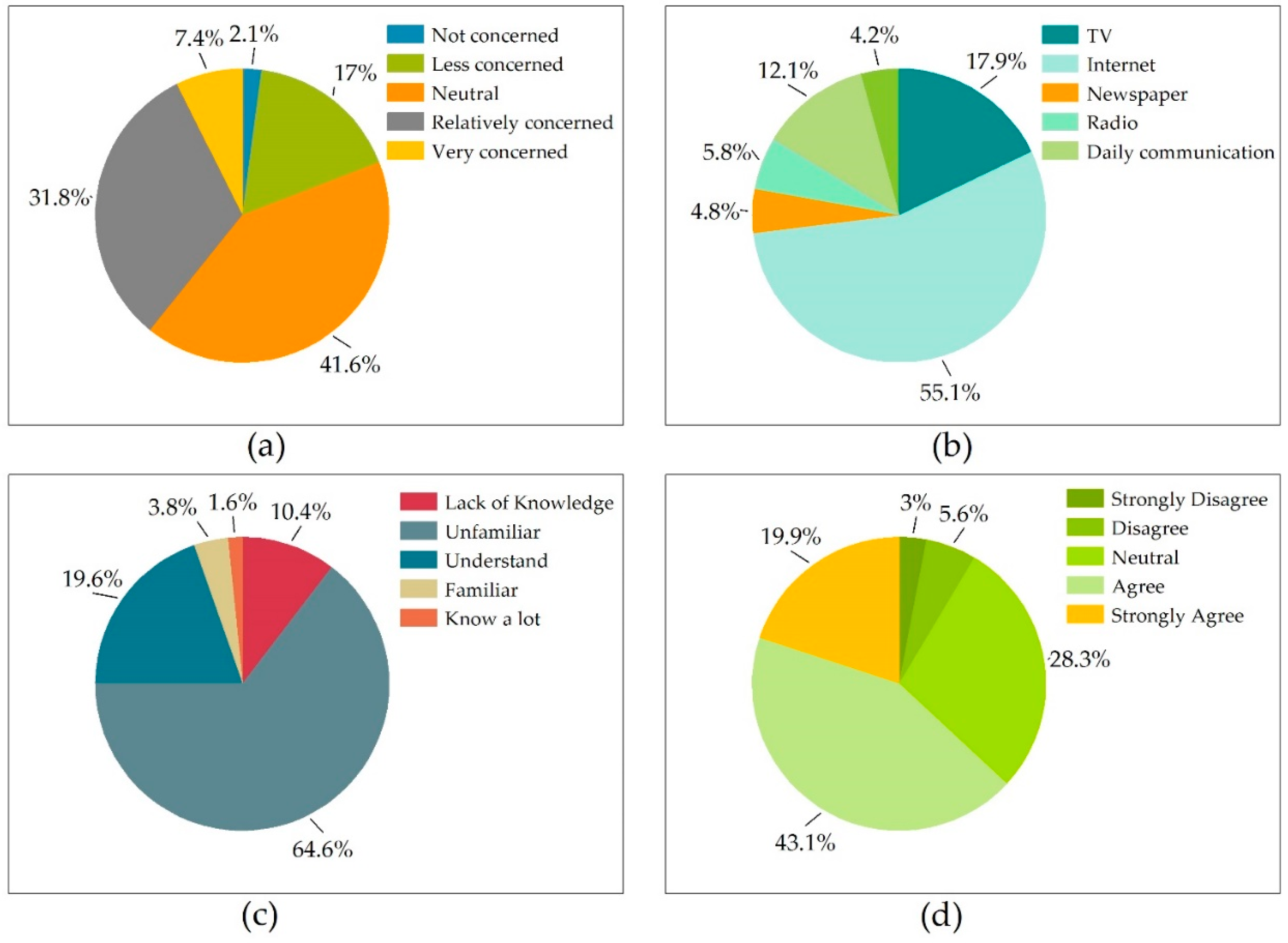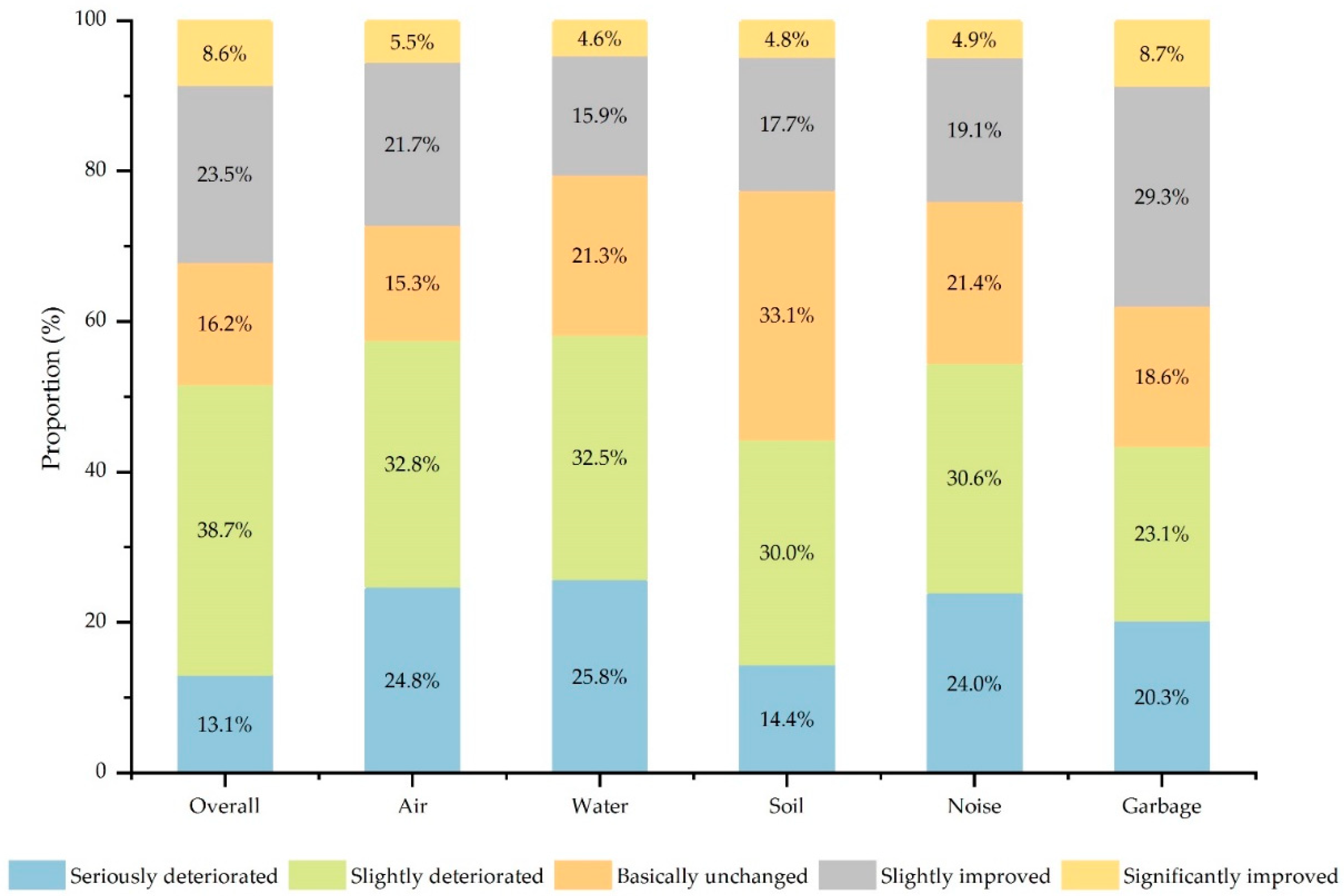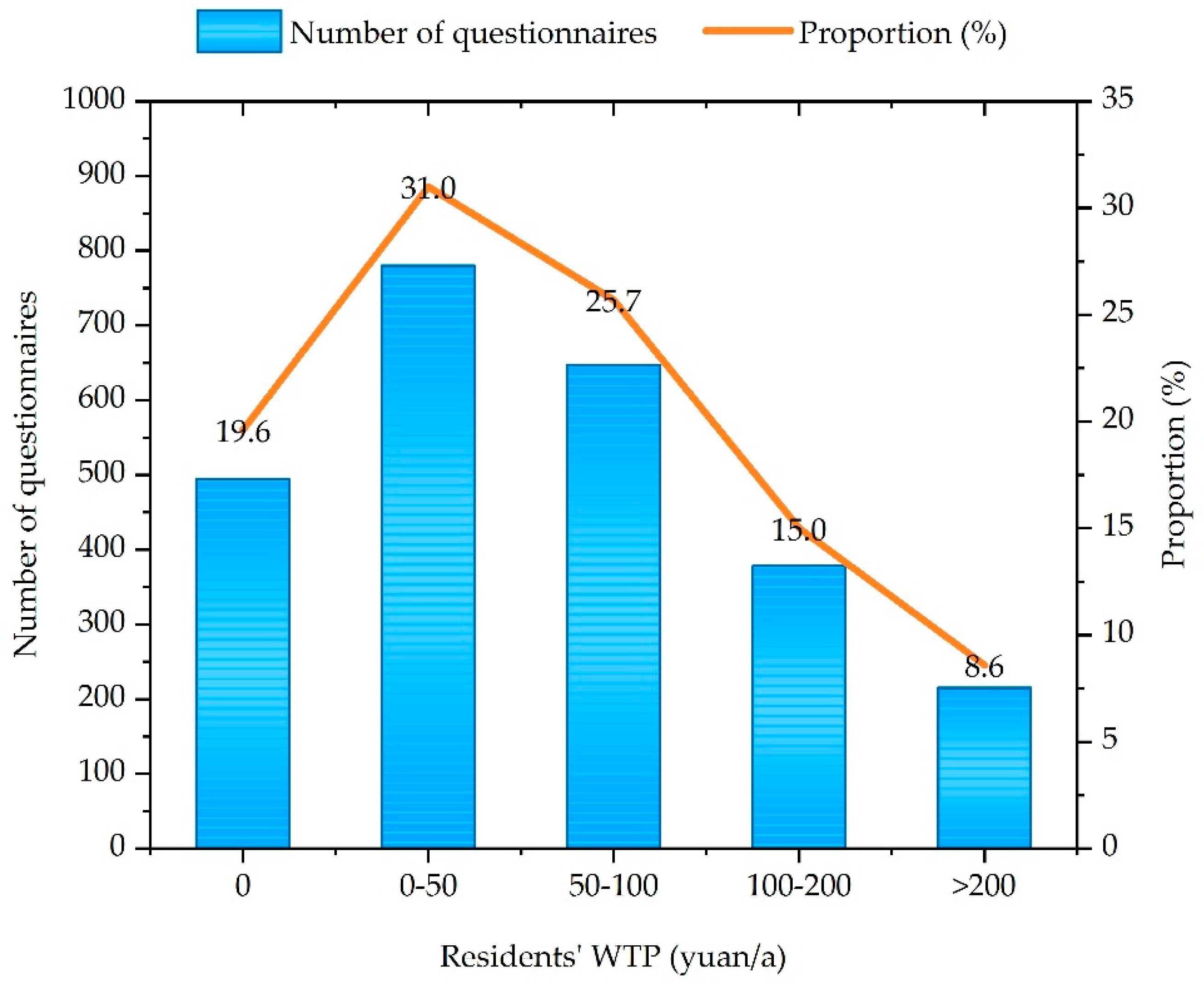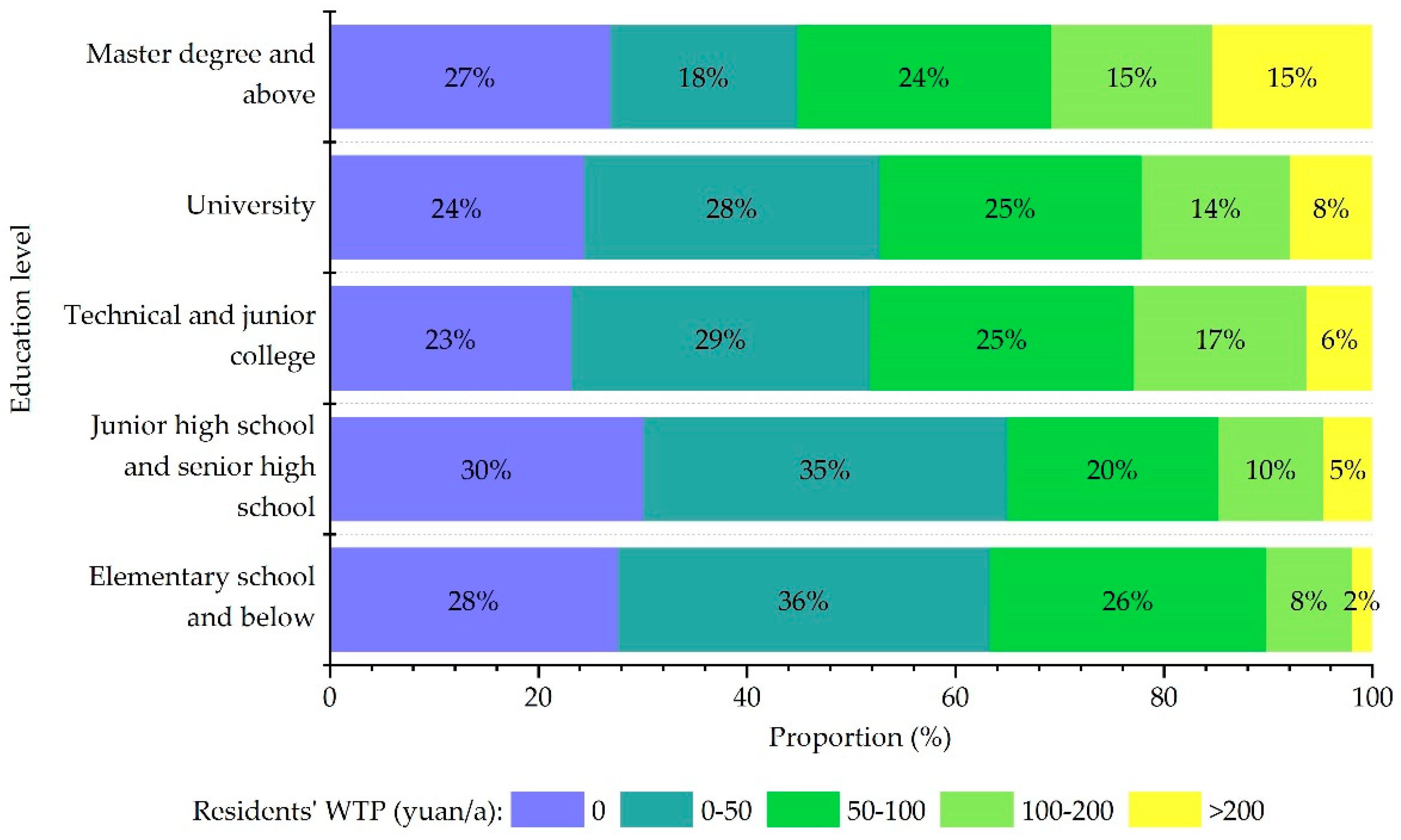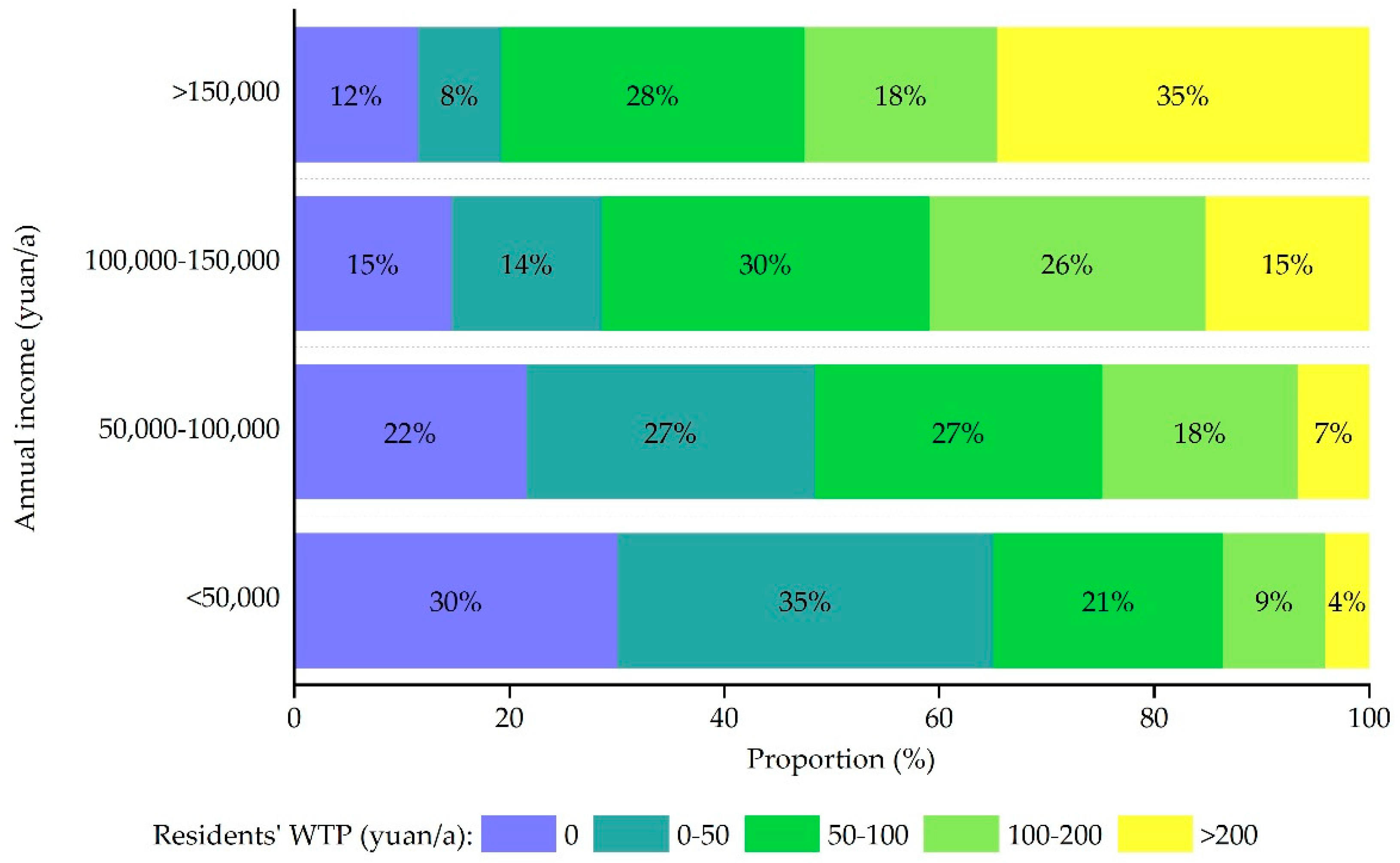1. Introduction
Resource-based cities are cities with good resource endowments, and the main share of industry and economic aggregates comes from resource and energy mining and processing [
1]. Historically, resource-based cities have made significant contributions to human development, but in the long run, the unsustainable development model of resource-based cities has not only failed to efficiently develop local natural resources but has also led to accelerated deterioration of the ecological environment in the region, economic recession, and other problems, which greatly threatened the health of the residents [
2,
3,
4,
5,
6]. The problems faced in the development of resource-based cities are closely related to policy guidance. As the main force in guiding the development and transformation of resource-based cities, government agencies of various countries carried out long-term explorations of the development model of resource-based cities and successively proposed various solutions [
7,
8,
9]. In 1987, the book “Our Common Future” provided a set of new theories and strategies for the coordinated development of nature, technology, economy, and society: the concept of sustainable development. This concept provided a new choice for the development of resource-based cities and humankind as a whole, and a new model of sustainable development of resource-based cities had emerged [
10].
China’s resource-based cities have undergone severe tests in their development models. Since 1949, due to the country’s strategy of giving priority to heavy industry, resource-based cities have played an important role in the distribution of national productivity. Similar to other countries, some resource-based cities have long relied on the mining and primary processing of a single resource, which has led to problems such as a single industrial structure, an imbalance in the employment structure, and serious environmental issues, and regional sustainable development has been under tremendous pressure [
1,
11]. In order to solve the aforementioned problems, in 1994, the Chinese government compiled the “White Paper on China’s Population, Environment and Development in the 21st Century”, incorporating sustainable development strategies into China’s long-term economic and social development plan for the first time. In 1997, the 15th National Congress of the Communist Party of China identified the sustainable development strategy as a scheme to be implemented in China’s drive for modernization, and clearly pointed out that its connotations include sustainable social development, viable ecological development, and sustainable economic development. In 2015, on the basis of sustainable development, the Fifth Plenary Session of the 18th Central Committee of the Communist Party of China proposed a set of new scientific concepts and methods to guide China’s long-term development—green development—and defined it as “economic growth and social development methods aimed at efficiency, harmony and sustainability” [
12]. In December 2020, the national ministries and commissions represented by the Ministry of Ecology and Environment further clarified the overall policy of “promoting green development with high-level protection” in the future. In essence, green development is in line with the model of sustainable development in an ideological context. It is not only the heritage of sustainable development, but also the Chinese innovation of sustainable development, as well as the Chinese practice of sustainable development.
Since the green development strategy was proposed, China has successively drawn up and implemented a number of green development research plans from the perspective of resource-based urban development. In 2007, the China International Mining Conference launched the initiative for the development of green mining for the first time, underlining the fundamental transformation of development and economic growth. In 2010, the “2010 China Green Development Index Annual Report” was published, reflecting the first set of the domestic green development monitoring index system and index measurement system, reflecting the production efficiency and resource utilization efficiency in economic growth at the national level, ecological protection and pollution discharge, government investment, green development management and governance, etc. The “China’s Regional Green Development Index Report” published in 2012 carried out a survey of public satisfaction with green development in 38 cities from the government’s perspective. A comparative analysis was carried out through a comprehensive assessment of the urban environment, infrastructure, and actions of the government on green development. The Fifth Plenary Session of the 18th Central Committee of the Communist Party of China presented five development concepts of green development, innovation, coordination, openness, and sharing. Experts and scholars have also conducted a great deal of research on green development from a variety of perspectives. Hu et al. combed the function definition, mechanism analysis, and development strategy of green development [
13]. Wu et al. studied the formation of the concept of green development and its future trend, and believed that green development would become the guiding principles for China’s economic and social development [
14]. Tu et al. evaluated the level of green development in the Chinese industry and studied the driving force of green development [
15]. Wang et al. assessed the transformational capabilities of China’s resource-based cities for green development [
16]. The previous research studies focused mainly on the connotation, concept, evaluation, and motivation of green development, which provided theoretical support for the green development of resource-based cities.
However, most of the existing studies are based on a top-down government perspective, advocating the government to make scientific, human, and material investments in the regional green development process [
17]. Although the government-led top-down approach may support the initial green development of resource-based cities, the success of the regional green development model and the sustainability of benefits depend on the main concerns of the various stakeholders (especially the public), involving many aspects such as funding, public awareness, and degree of recognition [
18,
19]. The Contingent Valuation Method (CVM) was originally proposed by Ciriacy-Wantrup and is often used to evaluate the economic value of non-competitive public goods such as environmental goods and services [
20]. In the form of a questionnaire, CVM asks the respondents about the maximum willingness to pay (WTP) for using or protecting a given environmental item or service or the minimum willingness to accept (WTA) for the loss of a given environmental item or service. Large deviations of WTA from WTP can arise without perfect complementarity between the public good and the market goods [
21], and WTP is closer to market value than WTA [
22]. Therefore, understanding the public’s attitude and willingness to pay (WTP) can provide important information to advance the green development of resource-based cities, which is conducive to the transition from a government-led model to a public participation model. However, relevant research is relatively scarce at present.
In summary, based on the green development goals of resource-based cities and residents’ response to green development, this study used a questionnaire survey to explore the local residents’ understanding of the green development of resource-based cities from the perspective of public perception, and employed the WTP survey as a starting point to explore the residents’ response to the local green development path and the corresponding influencing factors. This study aimed to analyze the driving factors and behavioral characteristics of the public in resource-based cities in promoting local green development. Meanwhile this study put forward feasible suggestions to city managers from the perspective of public participation, so as to guide resource-based cities to coordinate the relationship between economic development and ecological environment and realize people-oriented regional green and coordinated development.
3. Results and Discussion
3.1. Basic Situation of the Questionnaire Survey
This survey covered the whole area of Chifeng City, involving Hongshan district, Songshan district, Yuanbaoshan district, Linxi county, Ningcheng county, Aluhorqin banner, Balin left banner, Balin right banner, Keshiketeng banner, Wengniute banner, Kalaqin banner, and Aohan banner. From the basic situation of the respondents (
Table 3), the majority of respondents are female with their age distribution mostly concentrated between 17 and 49 years old (accounting for 75.1%). Only 12.3% of the respondents are over 61 years old. The respondents are in good health, and their education level is mostly technical secondary school and college, followed by undergraduate. Respondents with an annual income of less than 50 thousand yuan accounted for 54.7%, followed by those with an income of between 50 and 100 thousand yuan accounting for 35.6%, and those with an income of more than 100 thousand yuan accounted for only 9%. Among the occupation types, 51.4% of the respondents had fixed income (government officer, technical worker, business staff, and private business owner), and 48.6% of respondents were employed in the second and third industries.
3.2. Respondents’ Perceptions of Regional Ecological Environment Protection and Green Development
The results revealed that 81% of the respondents are concerned about the information related to the ecological environment of Chifeng (
Figure 3a) and expressed concern about the current status of the local ecological environment (
Figure 4). Based on the responses of the public about their perceptions of changes in the air quality, water environment, soil environment, noise environment, and garbage disposal in Chifeng in the past five years, it was found that the vast majority of respondents expressed deep concerns about the deterioration of the air, water, and noise environments. Almost 44% of the respondents considered that the soil environment in the region has exhibited a worsening trend in the past five years. Due to the comprehensive improvement of the urban and rural environment over the years, nearly 30% of the respondents thought that the garbage disposal had improved, but 43% of the respondents asserted that the overall garbage environment in the region had deteriorated. In general, virtually half of the respondents believed that the recent changes in trend of the ecological environment in Chifeng in the past five years was not ideal, and effective measures were urgently needed to improve the basic status of the ecological environment in the region. The public’s attention to the ecological environment is related to the channels through which they obtain relevant information. As illustrated in
Figure 3b, more than half of the respondents believed that online news was the main channel to learn about ecological and environmental protection. The internet (55%) and television (TV) news (25.3%) are the main ways for residents to obtain information about the ecological environment, followed by daily communication (17.1%), newspaper, and radio. It can be vividly observed that new media represented by the Internet and TV are the main channels for residents to obtain information on ecological and environmental protection and are also the major means for information dissemination and sensitization about green development compared with traditional media.
Furthermore, the degree of concern for the ecological environment and the urgency to change the current reality have greatly promoted the respondents’ demands for the transformation of regional development models. Green development, as a new path of resource-based city transformation advocated by the country, is gradually entering the public’s field of vision. Through the questionnaire survey, approximately 30% of the respondents expressed concern and understanding of the concept of green development. However, more than 70% of those surveyed believe that they have an iota of knowledge of green development-related theories (as shown in
Figure 3c), reflecting that the concept of green development is relatively new to the people in the region and there is still a need to strengthen publicity and dissemination. After the investigators explained in detail the connotation of green development, greater than 80% of the respondents agreed with the green development of resource-based cities, some of the respondents held a neutral attitude, and only 2.2% of the respondents opposed (
Figure 3d). With regards to effective ways of promoting green development, nearly 60% of the interviewees believed that the government’s policies and regulations were the most important way forward, followed by advocating green consumption patterns and encouraging the development of public transportation. Moreover, raising public awareness of the environment and increasing publicity and education are also powerful means of promoting the transformation of regional green development (
Figure 5). In terms of funding for green development, more respondents were likely to invest in urban human settlements compared to energy structure transformation and industrial pollutant control, accounting for 57.8% of the total (
Figure 6). The above results show that the public’s intention to support the regional green development process is to effectively improve their own quality of life. Whether the quality of life and happiness of residents has been improved is also the key to assessing the success of green development [
34].
3.3. Analysis of Respondents’ WTP for Green Development
The cost that residents are willing to pay for their resource-based city to promote green development is the main focus of this research. According to statistics (
Figure 7), among the 80.4% of the residents who agreed to pay, 38.56%, 31.97%, 18.66%, and 10.70% of the residents were willing to pay 0–50 yuan, 50–100 yuan, 100–200 yuan, and over 200 yuan respectively, to promote regional green development. Using the lower limit of the interval as the payment value, the calculated minimal public’s per capita WTP for green development is 45.05 yuan/a (about 7 dollars/a, 5.7 euros/a). A study on the WTP by Zhengzhou residents in the water-receiving area of the Middle Route of the South-to-North Water Transfer Project found that the highest per capita WTP was 99.48 yuan/year [
35]. Xu et al. calculated and analyzed the WTP of the residents of the Liaohe River Basin and discovered that the per capita WTP was 160.72 yuan/year [
36]. Compared with other research outcomes, the WTP obtained in this study is at a relatively low level.
On the one hand, this is related to factors such as the relatively new concept of green development in the region, the lack of acceptance by residents, and the relatively low-income level in underdeveloped areas. On the other hand, the possibility of an increase in residents’ WTP can be observed. With the smooth development of related work, after the public receives the dividends of green development, the bottom-up investment in ecological and environmental protection of the residents will inevitably become one of the strong driving forces for regional green development. Estimating with the population of Chifeng City in 2018, the total willingness of residents to pay exceeds 200 million yuan per year, representing 16% of the total investment in ecological environment protection of the Chifeng government that year. Although the actual total amount of WTP may be lower than this ratio because the hypothetical bias exists and the questionnaire survey strategy may affect WTP, the WTP is still considerable [
30,
37]. Therefore, relevant departments urgently need to explore the potential of residents to respond to green development in order to accelerate the process of the regional green development. Besides, as is depicted in
Table 4, only 19.6% of residents indicated that they were unwilling to pay for the green development in their cities. The reasons for their refusal to pay were similar to the results obtained from previous studies [
38]. Except for the main reason that people’s personal financial ability to pay is insufficient, some residents subscribed to the fact that paying for environmental services is not their own obligation and should be solely handled by the government.
Table 5 shows the coefficient results of interval regression of the respondents’ WTP for green development, and the values in parentheses are the standard errors. The first column of
Table 5 shows the regression results of the full sample. Given the 19.6% of zero WTP responses, we ran a hurdle model specification [
33]. Firstly, we estimated the probability that a respondent reports WTP greater than zero using probit regression (the second column) and then estimated WTP conditional level on such participation using interval regression (the third column). The results showed that the gender, household registration, education level, and annual income of residents significantly impact the WTP for green development. Annual income has the greatest impact on WTP, followed by gender, education level, and household registration. A more detailed analysis of these determinants is presented in
Section 3.5.
3.4. The Impact of Respondents’ Socioeconomic Characteristics on Their Attitudes towards Green Development in Resource-Based Cities
This survey investigated the attitudes of residents of resource-based cities with different characteristics to the government’s promotion of the regional green development. Based on a one-way ANOVA, the study found that respondents of different gender, age, household registration, occupation, education level, and annual income had different attitudes. Mathematical proofs of the results are added as appendices (
Table A1,
Table A2,
Table A3 and
Table A4).
In terms of gender, women are more supportive of regional green development than men. In terms of age, based on multiple comparative analysis, it was found that the older the respondents are, the more they agree with the government’s promotion of green development, except for the age group of 50–60 and above 60. There are significant differences in the public’s attitudes towards the green development in different household registration areas. In comparison with suburban and rural residents, urban residents are more inclined to support regional green development transformation. Women and the elderly are more concerned about or more likely to have a relatively superior personal living environment. In addition, urban residents have more obvious advantages than suburban and rural residents. It is this kind of concern for their own living environment and quality that makes the above-mentioned people more equipped with the subjective and objective conditions to take care of the environment in which they live.
Respondents of different occupations have significant differences in attitudes towards the government’s promotion of green development. Government officials and private business owners have a strong tendency towards green development. As the main pioneer of regional green development, government officials are more proactive in regional green development because they are more in tune with relevant policy theories. According to the average scores of groups with different levels of education, we believe that the higher the level of education, the higher the degree of approval of the government to promote of green development. Based on prior research findings, education plays a vital role in shaping values, thereby affecting people’s cognition and acceptance. Generally, educated people have more understanding of green development and are very inclined to make more environmentally conscious choices.
There are no significant differences in the ANOVA for groups of people with different annual income. The difference in annual income does not affect their common understanding of promoting green regional development and transformation. This is inseparable from the widespread dissemination of ecological civilization thoughts in China in recent years as well as the urgent need for all residents to improve the quality of the ecological environment in the region.
3.5. The Impact of Respondents’ Socioeconomic Characteristics on Residents’ WTP
Respondents of different genders, ages, household registrations, occupations, education levels, and annual income levels had different WTP for green development. In contrast with women, men have higher WTP, which may be closely related to men’s possession of more social resources. Different age groups exhibited different WTP for regional green development. The young and middle-aged groups (17–49 years old) are more inclined to invest in the regional green development, while the elderly groups with higher paying ability (above 50 years old) showed a weak WTP. This may be attributed to the respondents’ growth background and education. Respondents aged 17–49 are mostly open-minded, easy to accept new things, and have a certain income base, so they tend to show a relatively high level of payment. This is more evident in the age group of 28–38. Respondents over 50 years of age are relatively conservative in their thinking, with declining income expectations, so their payment amount is relatively low [
39]. The public’s readiness to pay for green development in different household registration locations differs significantly. Compared with suburban and rural residents, urban residents have a more significant intention to pay higher amounts, which is strongly connected to their higher income and their more convenient access to information. Furthermore, the enthusiasm to pay by different occupational groups also revealed substantial differences. Besides, government officers and business staff with stable jobs and ample income have relatively higher WTP, while farmers, service personnel, and retired groups also indicated concern for regional green development, and their WTP is relatively low due to unstable income sources. The mathematical proofs of the above results are added as appendices (
Table A5,
Table A6,
Table A7 and
Table A8).
Education level is also an important factor affecting the tendency to pay. As exemplified in
Figure 8, respondents with an education level of elementary school and below are eager to pay much less for urban green development than other groups. With the increase in the education level, the inclination to pay has increased significantly. Education has been proven to be a principal factor influencing people’s behaviors and opinions [
40]. A well-educated person may have a comprehensive understanding of the importance of environmental issues [
41].
There is a positive correlation between annual income level and WTP. Respondents with higher annual income are more willing to contribute greater portion of their income for regional green development. As illustrated in
Figure 9, respondents with the annual income of more than 150 thousand yuan have the highest tendency to pay, which is three times higher than those with an annual income of less than 50 thousand yuan. Previous research has also reported that people with higher incomes are enthusiastic to pay for environmental-related issues, which is as a result of their high level of information literacy [
42,
43].
The results of the ANOVA and multiple comparisons showed that urban residents, government officers, and well-educated respondents were keen to support regional green development and showed a strong WTP. The elderly and female respondents highly support the promotion of regional green development process, while men, middle-aged, and young people demonstrated higher WTP for green development. The difference in the annual income of the respondents is not reflected in their common perception of promoting green development in the region, but rather in the amount of their WTP. By analyzing the residents’ “attitude towards government’s promotion of regional green development” and “WTP for green development”, it was discovered that there are two different processes, which need to be analyzed and treated separately. Residents’ attitude towards the government’s promotion of regional green development depends more on residents’ demands for maintaining and obtaining a higher quality of life. The better the living environment, the more secure the job is, the better the living environment for individuals, the more subjective and objective conditions for caring about the environment in which they live, which are more prominent in both elderly and female respondents [
44]. The public’s recognition and acceptance of green development (related to education level) are the key prerequisites for residents to support regional green development and be ready to invest in it. On this basis, the respondents’ own income expectations and capability to pay are the key factors affecting the amount of payment.
3.6. Respondents’ Preference for Green Development Payment Forms
The study of residents who are willing to pay found out that these residents mostly prefer the form of payment by public fundraising (764 respondents), followed by uniform distribution after paying taxes to the country (616 respondents), and then cash or transfer to the local government environmental protection department (511 respondents). Some residents chose more than one option. Education level has a direct impact on the choice of payment methods. Respondents with higher education are more inclined to choose two methods: paying taxes and submitting them to government environmental protection departments. Respondents with middle school education and below had a preference to pay property fees to the community. Age is also one of the important factors that affect the choice of payment methods. In contrast with other groups, the elderly group (above 61 years old) does not want to pay by taxation. In addition, this study also conducted a survey on the compensation methods that residents hope to receive after participating in the regional green development process. It turned out that in terms of compensation strategies, residents prefer eco-tourism discounts, followed by personal work performance, and then personal credit systems.
